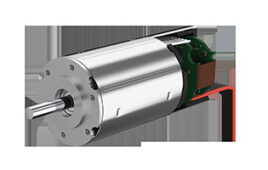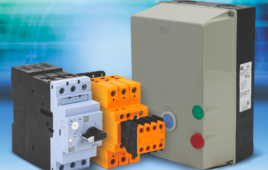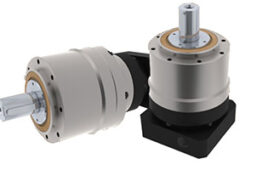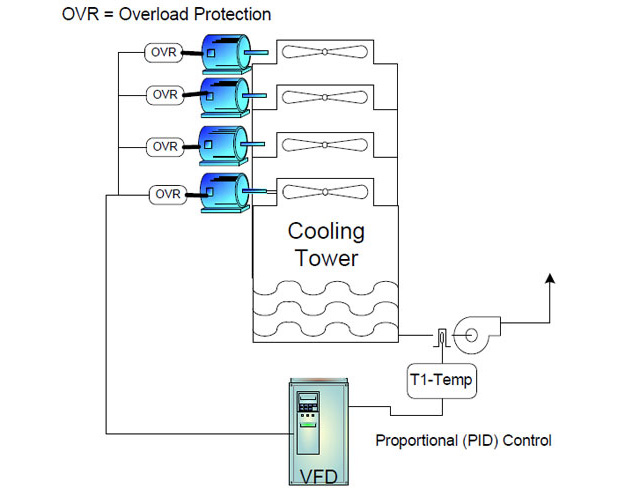Mindy Lin Ching,
Application Engineering Specialist – Lin Engineering
Step motors are often used in semiconductor applications. But selecting the right one frequently involves tradeoffs in performance. A small but accurate step motor will help keep the overall machine small, but torque might be an issue. On the other hand, a bigger, more powerful motor might not achieve the smooth and high accuracy performance demanded by these machines. No matter which motor is used, selecting one that meets the demands of the application is a must.
There are specific requirements important to semiconductor needs:
Torque vs. Size
Cleanliness
High Accuracy
Heat Generation

Step motor frame sizes
are determined by NEMA, however, motor lengths and holding torque vary
by manufacturer. When choosing a step motor, consider whether the extra
torque justifies extra length in an application.

Semiconductor
applications often require clean-room environments. Usually vacuum
rated step motors adhere to those restrictions. Ensuring that these
motors meet these requirements usually involves special handling during
assembly to limit outgassing and contamination.
Torque vs. size
With most semiconductor applications, you need to consider the overall size of the step motor. In general, manufactures adhere to frame sizes as defined by the National Electric Manufacturers Association (NEMA). The frame size of a step motor can range from the miniature NEMA 8 to the mammoth NEMA 42. Although the frame of each step motor is predetermined by NEMA, the lengths will vary from manufacturer to manufacturer. Accordingly, the corresponding torque produced by these step motors will depend upon the capabilities of each manufacturer. Lin Engineering, for example, manufacturers a NEMA 11 step motor that is available in three different stack lengths: 
When designing in motors, consider for example, whether the extra 7.4 oz-in. of holding torque justify moving from a motor that is 1.26 in. in length to a motor that is 2.01in. in length?
Cleanliness
In semiconductor applications, cleanliness is of the utmost importance. Most components used in the semiconductor industry are generally rated to function in a clean room environment, and step motors are no exception.
It is essential to ensure that the motor is free of all hydrocarbons such as grease and oil. Oil is often times considered the main enemy of machines used in this industry because it can easily spread to other components within the machine. This spread can cause components to fail or heat up and potentially disable the entire machine.
Ensuring that the motor does not emit particles is also a chief concern. Just as is the case with oil and grease, unwanted particles can spread to other areas of the machine and cause unwanted results.
Thus, the choice is often vacuum rated motors because of their compatibility with clean room environments. To make small step motors vacuum rated, the motor manufacturer removes all paint and oils from the motor. Next, high temperature windings are used as well as Teflon leads. Lastly, depending on the rating of the vacuum environment, either no-lube stainless steel bearings or special-lube stainless steel bearings are used. During the entire manufacturing process, latex gloves are worn to ensure that no residue from human touch is left behind on the motors. All of the above special parts and handling ensure limited outgassing and contamination.
High accuracy
High accuracy is another important necessity for motors operating within the semiconductor industry. Step motors rotate in terms of degrees and all of them will have some inherent form of step error. Choose one with the least amount of error.
Step error is measured in increments of arc minutes, where 1 arc minute equals 1/60°, or 0.0167°. Not every motor can step even spaces under microstepping. Lin Engineering’s 0.9° motors maintain +/- 1.5 arc minute error under 1/64 microstepping. Each step that the motor takes is 0.9° divided by 64, or, 0.014°. With every step that is taken, the maximum error from this 0.9 degree step motor will be 0.025°. The industry standard error range for a 0.9° step motor is +/- 4.5 to +/- 18 arc minutes.
Heat generation
Providing any object powered through electricity with current will result in some natural heat generation. Depending on the motor and application, there may be limited ways to dissipate the heat. Because it is important to control the amount of heat produced, selecting the most efficient motor is the way to go.
Step motor manufacturers can help reduce heat buildup through the creation of new motor windings. Every step motor has a maximum efficiency point. With more or less windings and different wire gauges, a motor manufacturer can create a motor to be most efficient at the desired operating speed. Power will go towards output torque rather than heat generation from the motor.

The curve depicts how manufacturers can manipulate the efficiency curve per the requested speed specification. Imagine using a step motor at very slow speeds, but the efficiency is either of the two curves shown. Excess heat would be generated due to such inefficiency.
In addition to selecting the right motor to maximize efficiency, there are ways to select a lower resistance winding to minimize the overall I2 R heat.
Lin Engineering
www.linengineering.com
::Design World::
Filed Under: Semiconductor manufacture, Motion control • motor controls, Motors • servo, Motors • stepper





Tell Us What You Think!